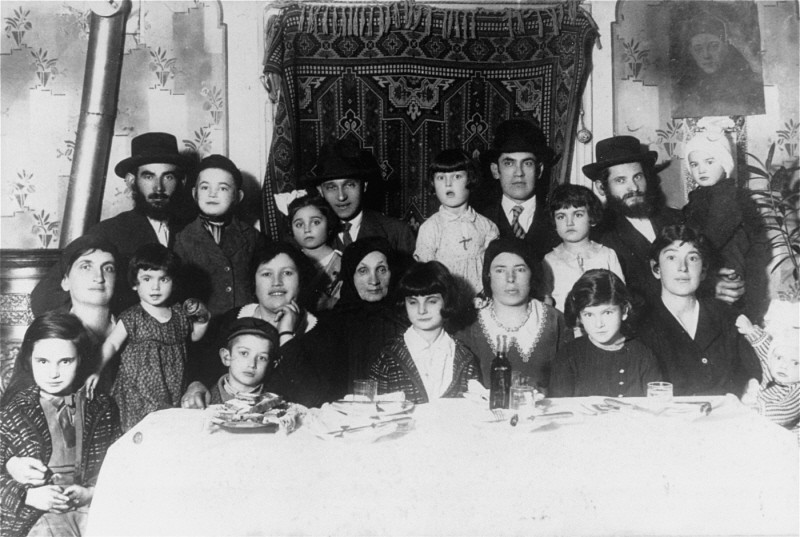
Jewish Community of Munkacs from the Eighteenth Century to World War I
Eighteenth Century to World War I
The first documentary evidence of Jews in Munkacs dates from the second half of the seventeenth century. Because of the town's proximity to the Polish region of Galicia, it continued to be heavily influenced by cultural and religious trends among Galician Jewry, though in the nineteenth century there were important contacts with other Jewish centers in the Austro-Hungarian Monarchy such as Pressburg (Bratislava). The town's location also led some Munkacs Jews to assume the role of brokers in Galician-Hungarian commerce.
The first synagogue was founded in 1768, and Hasidism took root and flourished in the early- to mid-nineteenth century. Rabbi Hayyim Sofer, a disciple of the renowned Rabbi Moses Sofer (known as Hatam Sofer) and non-Hasidic leader of Hungarian Orthodoxy (later rabbi of Pest), was succeeded as communal rabbi in 1881 by Rabbi Shlomo Shapira (1832-1893), founder of the Munkacs Hasidic dynasty. Rabbi Spira, along with his son and grandson, Rabbi Zevi Hirsch (1850-1913) and Rabbi Hayyim Eleazar (1872-1937), was a fervent opponent of any kind of compromise with modernity or modern Jewish movements, especially Zionism.
As a result in part of the late-nineteenth century official policy of Magyarization (assimilation to Hungarian culture) and in part to the enthusiastic response of some Hungarian Jews to the adoption of Magyar culture, many Jews learned Hungarian in state schools and some even began speaking it at home. Many also had a basic knowledge of Ukrainian, which enabled them to communicate with their neighbors and customers. However, the vast majority of Jews continued to speak Yiddish into the interwar period.
Munkacs in the Aftermath of World War I
During World War I, Subcarpathian Rus was occupied by Russian troops until 1917. Large numbers of refugees arrived in the area during the war. In 1919, Ukrainian Cossacks led by Simon (Semyon) Petliura attempted to conquer Munkacs but were successfully fought off by a Jewish civilian guard made up of war veterans. At one point, Munkacs was split between the Czech and the Romanian armies, and a passport was needed to cross certain streets.
In 1920, the region became part of the new Czechoslovak Republic as a result of the Treaty of Trianon. The Jews of Munkacs were granted official minority status along with all other Jews in Czechoslovakia. Munkacs was the second largest Jewish community incorporated into the Czechoslovak state.
During the period of reconstruction after World War I, Munkacs served as headquarters for relief efforts organized and funded by the American Jewish Joint Distribution Committee (the JDC or "Joint"). A reconstruction conference held in Munkacs in 1922 was attended by 28 representatives from the Jewish communities of Subcarpathian Rus.
Critical Thinking Questions
- Learn about the history of the Jewish community in your country.

